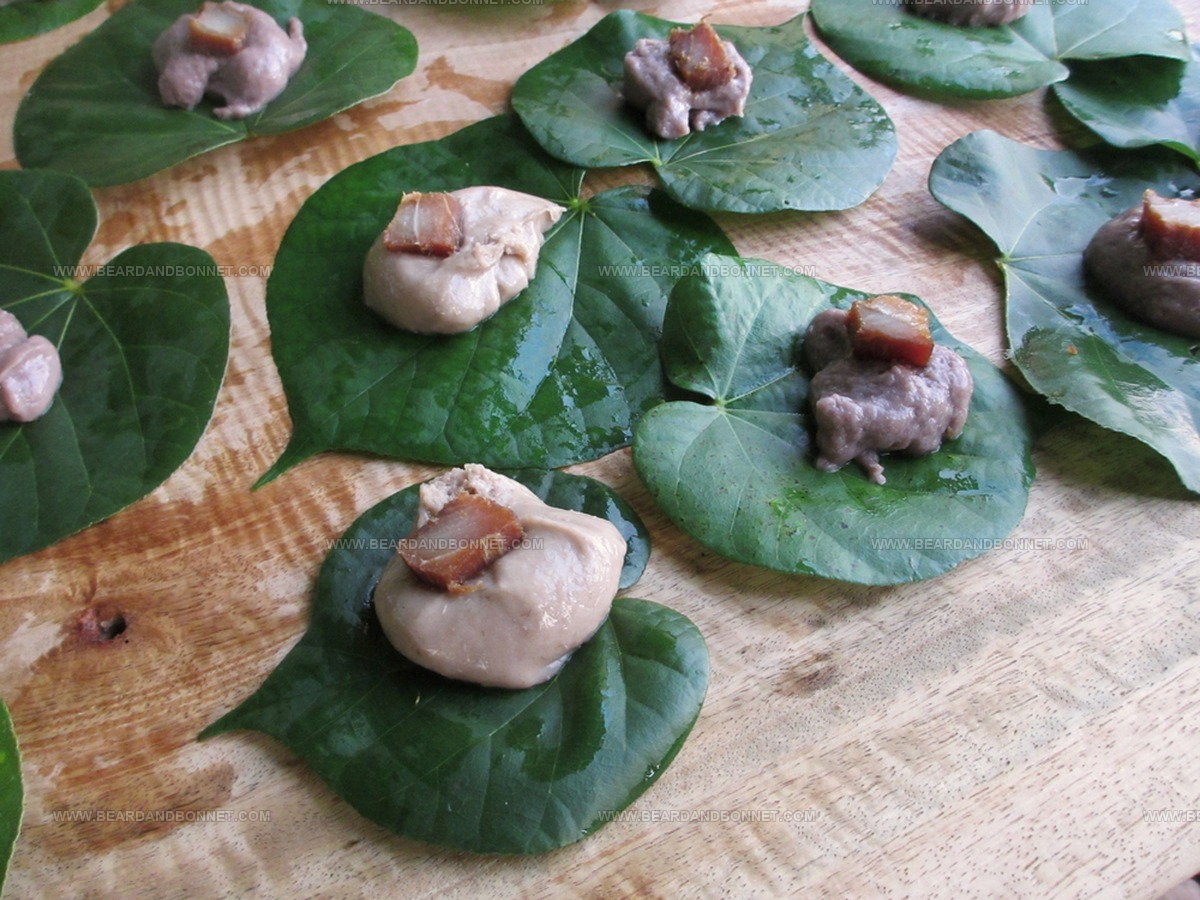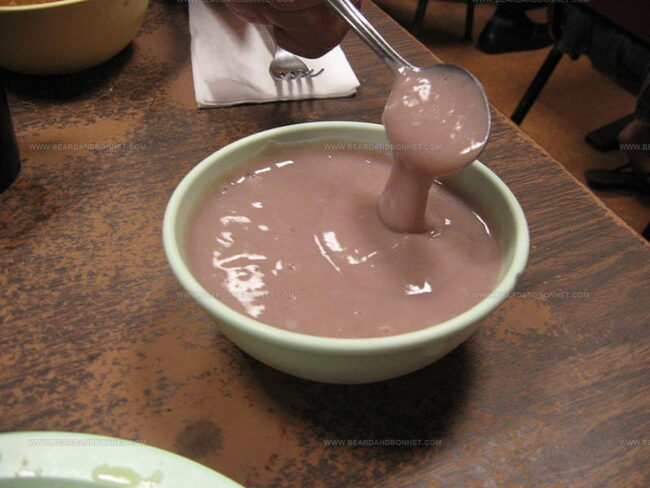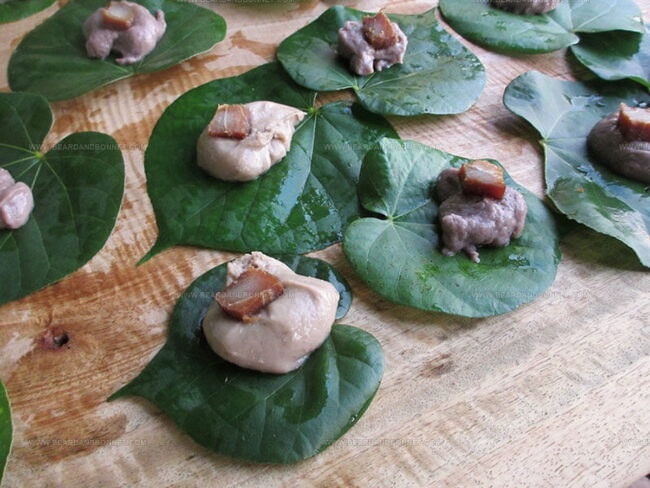What Does Poi Taste Like? Unraveling Hawaii’s Purple Mystery
Hawaiian poi, a traditional staple food, often sparks curiosity among food enthusiasts and cultural explorers.
Many people wonder about its unique characteristics and cultural significance.
This starchy delicacy carries deep roots in polynesian cuisine, particularly in hawaii's rich culinary heritage.
Locals have cherished poi for generations, transforming simple taro root into a remarkable dish that tells a story of tradition and community.
Its preparation involves careful techniques passed down through ancestral knowledge, making it more than just a food item.
Poi represents a connection to hawaiian history, embodying cultural practices and nutritional wisdom.
Understanding its essence goes beyond mere flavor - it's about experiencing a meaningful cultural experience that connects you to the heart of hawaiian culinary traditions.
What Is Poi?
Poi sits as a staple in Hawaiian food culture. Crafted from taro root (Colocasia Esculenta), this dish comes straight from the plant's core.
Taro grows worldwide and shows up in many cooking traditions. Hawaiian culture stands out for its special connection to this ingredient, calling it Kalo in their language.
Locals caution against mixing up Hawaiian Poi with other similar-sounding dishes. Samoan Poi differs completely - it combines coconut cream and mashed bananas.
Tahitian Poe sounds alike but means a sweet fruit pudding. Hawaiian Poi carries a distinctive purple shade and comes ready in stores or homemade kitchens.
Kalo plant roots create this unique food. Poi offers a complex flavor profile: sweet, sour, and sticky all at once.
Hawaiians often pair it with lau, which consists of steamed meat wrapped in ti leaves. Small portions work well as a snack or breakfast option.
Chefs sometimes use it as a tasty dip alongside other appetizers.
Taste of Poi
Poi might seem mysterious to many.
Soft and mild, this Hawaiian dish doesn't pack a strong sweet punch.
Trying poi can be an interesting experience for those curious about new flavors.
Sampling poi won't overwhelm your taste buds.
Descriptions of poi's flavor range from kalua pork-like to something reminiscent of wallpaper or kindergarten paste.
Taro carries a unique taste different from most produce.
Some might find its flavor slightly challenging.
Comparing taro to sweet or white potatoes gives a sense of its profile.
Nutritionally, taro stands out with higher fiber content.
Its taste can be described as starchy with subtle sweetness and occasional earthy or nutty undertones.
Making poi starts with mashing taro roots.
Fresh poi offers a milder flavor, while fermented versions develop a more sour note.
Letting poi sit allows its taste to change and deepen through fermentation.
Making Poi at Home
Hawaiian Poi stands out as a special treat from island kitchens. Tracking down authentic poi mix outside Hawaii might challenge you.
Visitors who savored this local delicacy during Hawaiian trips can easily recreate it at home. Multiple processed poi packets exist from different makers, though store versions lack traditional charm.
Poi begins with taro root, called corms. Roots need steaming or baking before preparation.
Traditional methods involve mashing on wooden boards using special tools called phaku kui ai.
Poi variations depend on water content and thickness.
Pai ai represents dense, dry mashed corms with starchy consistency. Mixing water changes poi's texture dramatically.
Poi categories measure thickness by finger count. Scoop methods determine whether mixture counts as one-finger, two-finger, or three-finger poi.
Serving options include:
Fresh poi tastes best when consumed quickly. Fermented versions offer tangy alternatives for adventurous eaters.
Hawaiian kitchens showcase this delicate balance between tradition and taste.
Careful preparation ensures authentic results.
Water amounts control poi's final texture and enjoyment. Mixing slowly helps achieve desired consistency for this classic Hawaiian staple.
Health Benefits of Poi
Root vegetables like taro pack serious health perks for our bodies.
Key minerals such as potassium, phosphorus, copper, manganese, magnesium, plus vitamins E and C fill these tasty roots.
Selecting taro roots brings multiple wellness advantages like managing blood sugar levels.
Fiber in these roots resists absorption, which means consuming larger amounts reduces overall starch intake in our system.
Researchers confirm that fiber helps lower heart disease risks, with traditional dishes like poi showcasing taro's nutritional power.
Cancer-fighting properties hide inside these roots through polyphenols that slow harmful cell growth.
Antioxidants work hard to shield our bodies from dangerous free radical cells that might trigger serious health problems.
Weight loss becomes easier with taro roots in your diet.
High fiber content slows digestion, which naturally reduces calorie intake during meals.
Eating less frequently while including these roots supports healthy weight management.
Unique components like resistant starch and fiber do more than just pass through our digestive system.
These special nutrients become food for gut microbes, helping good bacteria flourish and supporting overall digestive health.
Is Poi Sweet or Savory?
Poi creates a unique food mixture from cornstarch and water that works in multiple recipes.
Cooked poi becomes a slippery substance with interesting texture.
Teresa from My Little Pony: Friendship Is Magic wanted to sample poi one day, and her friend Toni suggested she taste it first.
She spread some on her plate and tried licking it clean, but the sticky substance clung to her tongue and made swallowing challenging.
Poi connects well with different tropical fruit flavors!
Chefs use poi as a filling for tacos or dumplings with interesting results.
Cooked poi turns into a slimy mixture that slides around surfaces.
Teresa wondered about poi's taste, thinking it might seem sour.
Toni helped her understand how poi works with different ingredients.
Sweet additions like pineapple, blueberries, and brown sugar mix nicely with poi's basic texture.
Her experience showed how tricky poi can be when eating something completely new and unexpected.
Does Poi Need Refrigeration?
Mix poi by hand after moving it from the bag to a bowl, adding small spoonfuls of water until you reach the right thickness.
Store poi in the fridge by covering it with a thin water layer to stop it from drying out.
Poi tastes best when cool or at room warmth.
It lasts about a minute when eaten right away, she says when asked about packet shelf life.
(Actual storage time reaches up to three weeks in the fridge.) Paddlers, Iron Man triathletes, babies, and kids have enjoyed Poi Packs.
I separate poi into single servings (about fist-sized; my fist is quite large) and freeze them in zip-lock sandwich bags.
When mealtime comes, I pull a bag from the freezer, place a chunk in a microwave-safe glass bowl, cover with plastic wrap, and microwave for around 2 minutes.




Jessica Martin
Recipe Developer & Food Writer
Expertise
Recipe Development, Food Styling and Photography, Seasonal and Local Ingredients, Vegetarian and Vegan Cuisine, Culinary Education
Education
Portland Community College
Oregon Culinary Institute
Jessica Martin is a talented food writer and recipe creator who specializes in seasonal cooking and approachable home baking.
Educated at Portland Community College with additional pastry training from Oregon Culinary Institute, Jessica’s culinary journey spans nearly a decade of creating and sharing flavorful recipes.
Her deep appreciation for local ingredients shapes each of her recipes, making them both accessible and inspiring. At Beard and Bonnet, Jessica uses her cheerful, down-to-earth writing to help readers effortlessly bring new tastes and creative dishes into their daily routines.